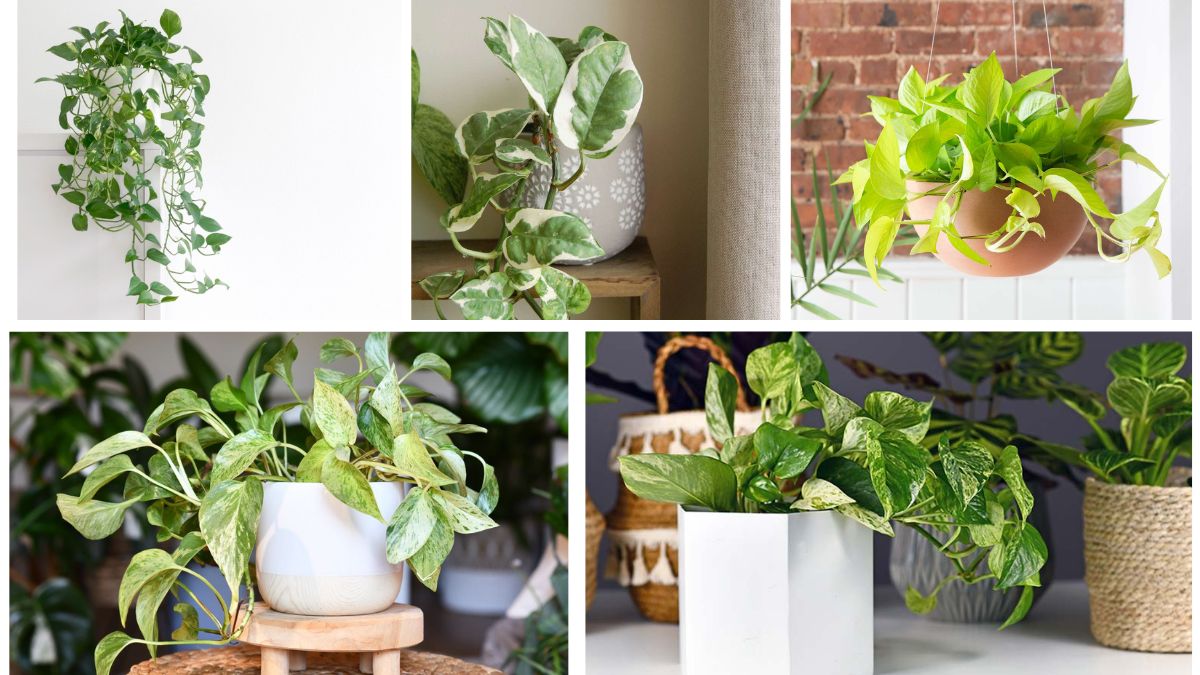The pothos plant (Epipremnum aureum), also known as devil’s ivy, is one of the most popular and resilient houseplants worldwide. Its heart-shaped leaves, trailing vines, and ease of care make it ideal for both beginners and experienced plant enthusiasts. Beyond aesthetics, pothos plants also improve indoor air quality by filtering toxins, making them a perfect addition to homes, offices, and classrooms.
This article provides a comprehensive guide on how to care for a pothos plant, focusing on proper watering, lighting, soil selection, fertilization, pruning, propagation, and pest management to ensure optimal growth and long-lasting health.
Introduction
Pothos plants are known for their vigor and adaptability, thriving in a wide range of indoor conditions. They can grow in low light, adapt to various soil types, and even survive occasional neglect. However, for robust growth, lush foliage, and long trailing vines, understanding their specific care needs is crucial.
Key benefits of pothos plants include:
- Air purification: Removes indoor toxins like formaldehyde, benzene, and xylene
- Low maintenance: Thrives in low-light and low-humidity conditions
- Versatility: Can be grown in hanging baskets, on shelves, or as climbing plants
By following detailed care practices, homeowners can maximize growth, maintain vibrant foliage, and enjoy a flourishing indoor garden.
1. Selecting the Right Pot and Soil
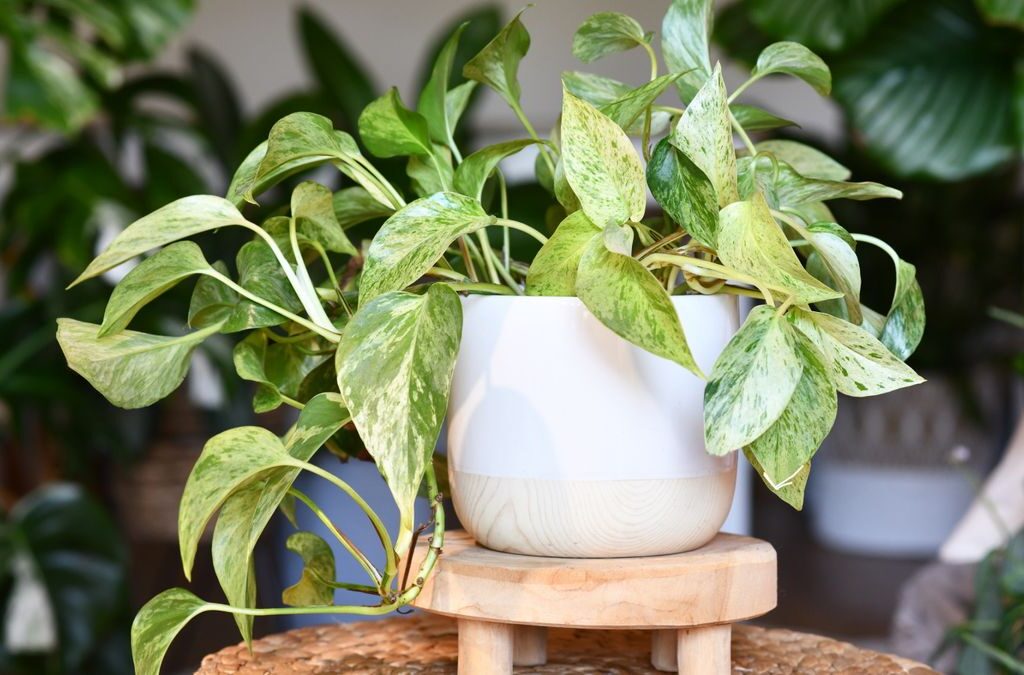
Pot Selection
Choosing the right container is essential for pothos health:
- Material: Terracotta, ceramic, or plastic pots work well
- Size: Start with a pot slightly larger than the root ball; avoid oversized pots which can retain too much moisture
- Drainage: Ensure the pot has drainage holes to prevent waterlogging, which can lead to root rot
Soil Requirements
Pothos plants prefer a well-draining, nutrient-rich soil mix:
- Use a standard potting mix with peat moss or coco coir to retain some moisture while allowing drainage
- Add perlite or sand to improve aeration and prevent soil compaction
- Avoid heavy garden soil, which retains too much water
Proper soil and container selection promotes healthy root growth, which is the foundation for vigorous vine development.
2. Watering for Healthy Growth
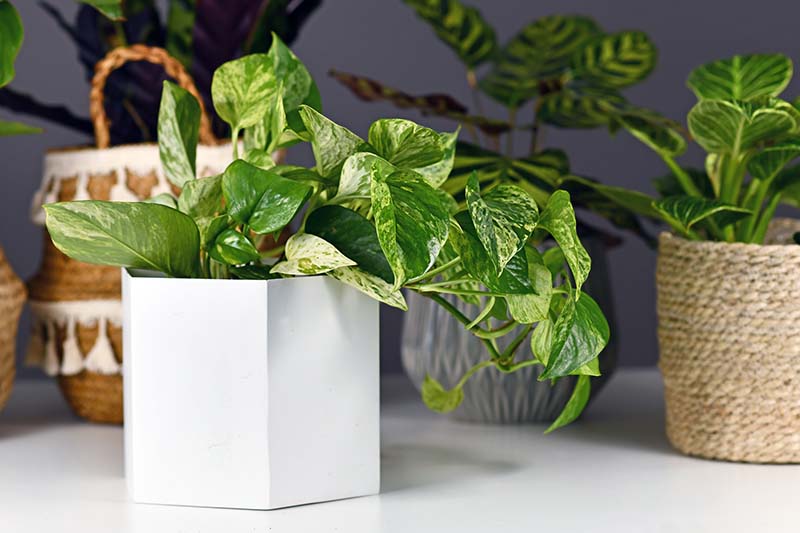
Watering is critical for pothos growth but is often misunderstood. Overwatering is a common mistake that can stunt growth or kill the plant.
Watering Guidelines
- Water when the top 1–2 inches of soil are dry
- Reduce watering in winter when the plant’s growth slows down
- Ensure excess water drains from the pot to avoid root rot
Tips for Optimal Watering
- Use room temperature water to avoid shocking the roots
- Water evenly around the base to encourage uniform root development
- Consider using a moisture meter for precise monitoring, especially for indoor plants
Consistent yet moderate watering ensures strong root systems and healthy, vibrant leaves.
3. Light Requirements
Pothos plants are adaptable to different lighting conditions, but light quality affects growth rate and leaf color.
Ideal Light Conditions
- Bright, indirect light: Produces lush, vibrant foliage and promotes faster growth
- Low light: Plant survives but growth slows, leaves may become smaller and less variegated
- Direct sunlight: Can scorch leaves, so avoid placing the plant in harsh afternoon sun
Placement Tips
- Place near east or north-facing windows for moderate light
- Rotate the plant regularly to ensure even growth
- Use artificial grow lights if natural light is insufficient
Proper lighting ensures healthy vine elongation, vibrant leaf color, and overall plant vigor.
4. Fertilization
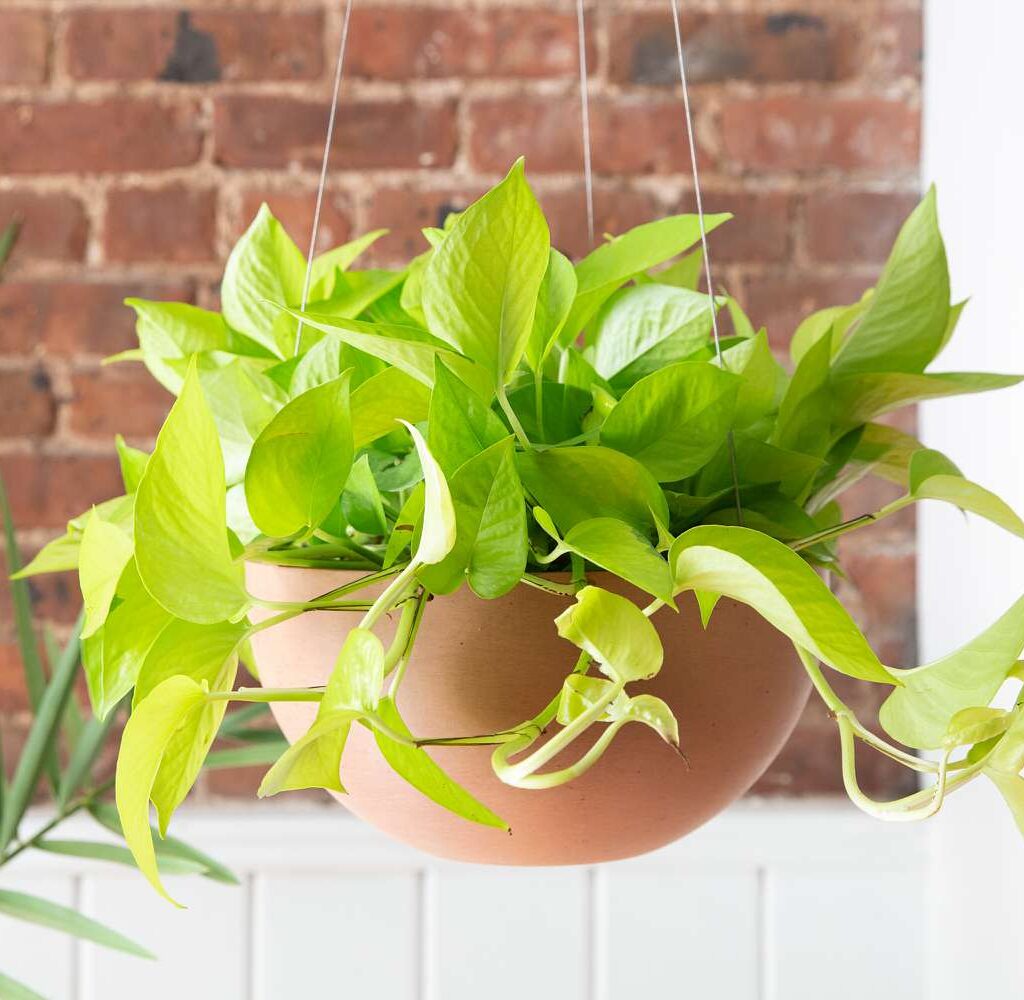
While pothos plants are low-maintenance, occasional fertilization supports vigorous growth.
Fertilizer Guidelines
- Use a balanced liquid houseplant fertilizer (e.g., 10-10-10) every 4–6 weeks during the growing season
- Reduce feeding in fall and winter when growth slows
- Avoid over-fertilization, which can burn roots and yellow leaves
Tips for Effective Fertilization
- Dilute fertilizer to half the recommended strength for young or sensitive plants
- Fertilize after watering to prevent root burn
- Combine with organic options like compost tea or worm castings for natural growth boost
Proper fertilization promotes vigorous vine extension, larger leaves, and enhanced leaf variegation.
5. Pruning and Training
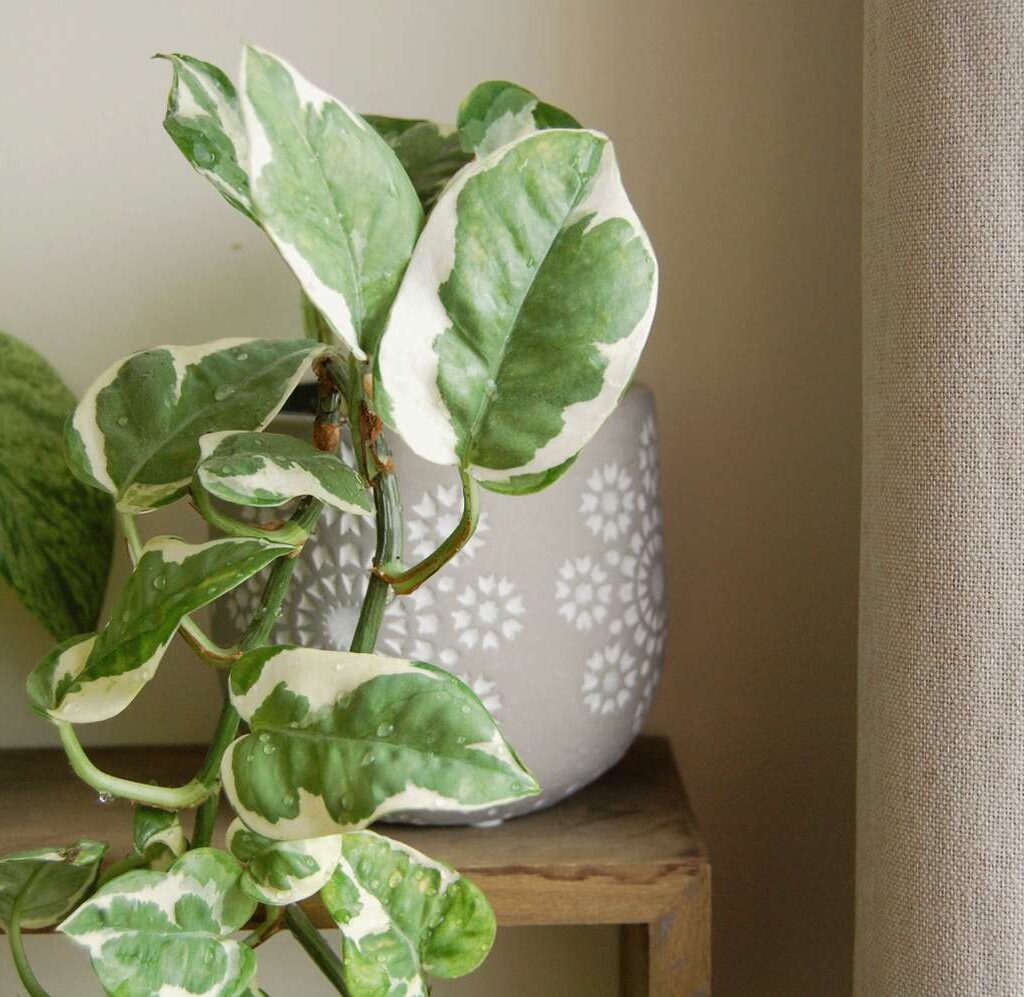
Pruning pothos plants is essential for shape, size control, and encouraging new growth.
Pruning Guidelines
- Trim long, leggy vines to encourage branching
- Remove yellow or damaged leaves to maintain plant health
- Cut just above a node to promote new shoots
Training Techniques
- Use trellises, stakes, or moss poles for climbing pothos
- Allow vines to trail from hanging baskets for decorative appeal
- Regular pruning maintains compact, bushy growth while extending vine length
Pruning not only improves appearance but also stimulates continuous growth and leaf production.
6. Propagation
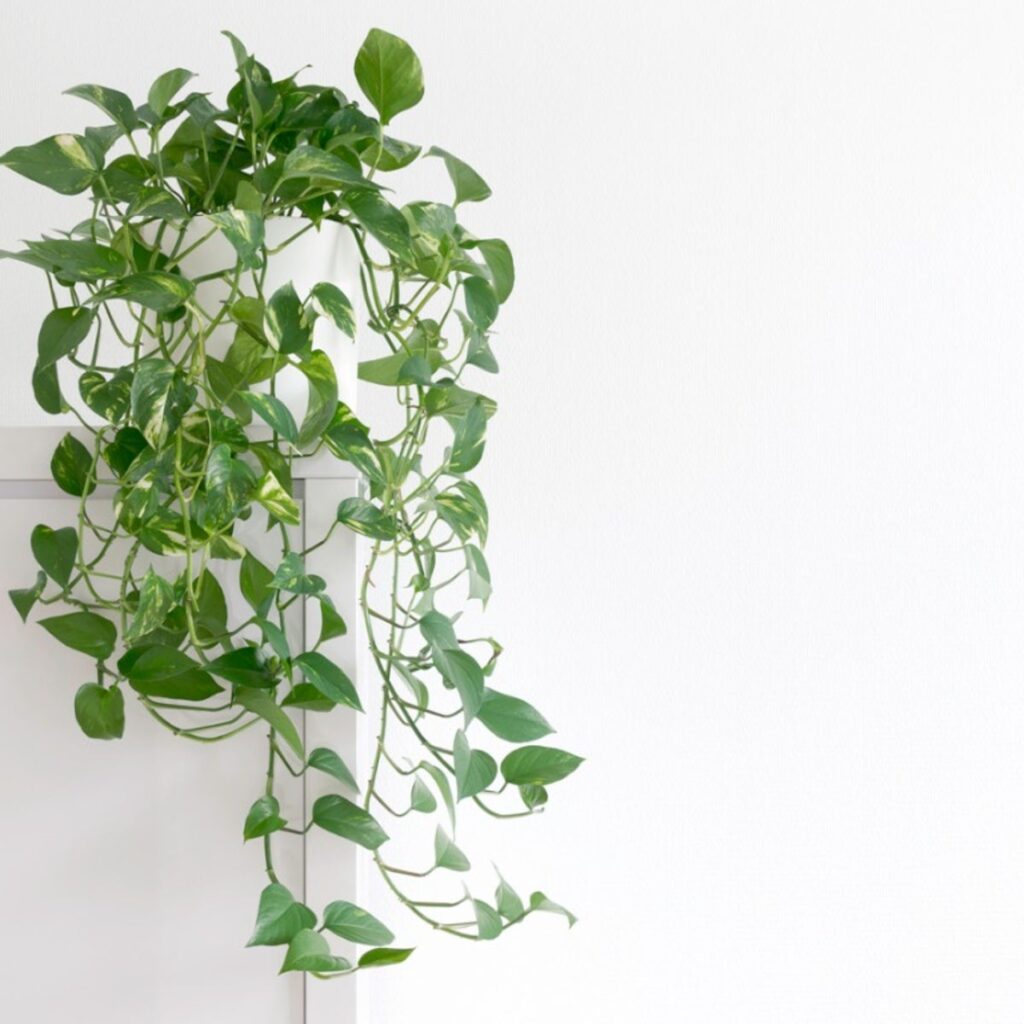
Pothos plants are extremely easy to propagate, making them ideal for expanding your indoor garden.
Propagation Methods
- Stem cuttings: Cut 4–6 inch sections with at least one node
- Place cuttings in water or moist soil
- Roots typically develop within 2–4 weeks
Tips for Successful Propagation
- Use clean, sharp scissors to avoid infections
- Change water every few days if propagating in water
- Plant rooted cuttings in well-draining soil to continue growth
Propagation allows gardeners to multiply plants efficiently while maintaining strong, healthy growth.
7. Pest and Disease Management
Although pothos are resilient, they can occasionally face pests or diseases.
Common Issues
- Pests: Spider mites, mealybugs, and aphids
- Diseases: Root rot due to overwatering, leaf spots from fungal infections
Prevention and Treatment
- Inspect leaves regularly for pests and discoloration
- Wipe leaves with mild soapy water to remove insects
- Ensure proper watering, airflow, and well-draining soil to prevent fungal problems
Early intervention prevents serious damage and ensures continuous healthy growth.
8. Environmental Considerations
Pothos plants thrive in average household conditions but respond best to consistent temperature and humidity.
Optimal Conditions
- Temperature: 65–85°F (18–29°C)
- Humidity: Moderate; mist leaves occasionally in dry climates
- Avoid cold drafts or sudden temperature changes
Maintaining these conditions supports steady growth, vibrant foliage, and resistance to stress.
Conclusion
Caring for a pothos plant involves a combination of proper watering, suitable lighting, nutrient-rich soil, pruning, and propagation techniques. By understanding its growth habits and environmental preferences, homeowners can ensure healthy, thriving vines with lush, vibrant leaves.
Pothos plants are perfect for beginner gardeners, providing a rewarding combination of aesthetics, air purification, and ease of care. Whether trailing from a hanging basket, climbing a moss pole, or filling a corner shelf, these versatile plants add greenery, life, and beauty to any indoor space.
With consistent care and attention to watering, light, and nutrients, your pothos plant can grow vigorously, producing long vines and abundant foliage, making it a stunning centerpiece in your indoor garden.
